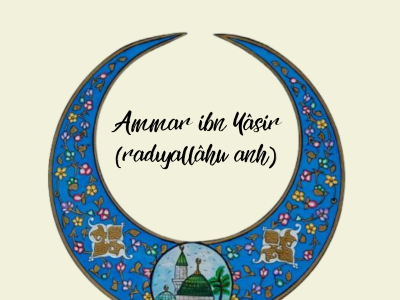Astronomy, like in other civilizations, is an ancient science that has garnered great interest in Islamic civilization. According to available sources, the study of the Sun, Moon, planets, and stars can be traced back to the Assyrian and Babylonian civilizations. The Babylonians, observing Venus around 1700 BCE, discovered a few of the known constellations.[1]
In Ancient Greece, astronomy was accepted as a branch of mathematics. Significant advancements during this time included the development of the Antikythera Mechanism, a device used to determine astronomical units, and Aristotle’s theory proposing that celestial bodies move in circular orbits.[2] Additionally, Aristarchus of Samos conducted experiments to measure the distance between the Earth and the Moon and explored the concept of Earth’s orbit around the Sun. These notable developments contributed to the progress of astronomy in that era.
Eratosthenes, in the 2nd century BCE, became the first person to successfully measure the circumference of the Earth. Astronomy reached its pinnacle with Ptolemy during the Ancient Age. Ptolemy developed the geocentric model of the universe, attempting to prove that the Earth was fixed and motionless. He compiled and systematized the views and discoveries of the great astronomers of the ancient era, and his influence lasted until the time of Kepler and Copernicus.[3]
During the Middle Ages (500–1500), Muslims made significant progress in the field of astronomy by translating and studying new astronomical sources acquired through relations.[4] They invented new instruments and improved upon existing ones to aid their research.
Muslim scholars reflected their accumulated knowledge in astronomy through their contributions to architecture, art, and design. This influence can be clearly seen in various architectural and artistic representations. One notable example is the Qusayr ‘Amra palace, built by the Umayyads in present-day western Jordan between 711 and 715. The bathhouse section of the palace features a map reminiscent of a celestial chart, depicting 400 stars, constellations, and coordinates of the zodiac belt.
During the Islamic golden age, observatories were established. Among the oldest are the Shamsiya Observatory built in 828 and the observatory on Mount Qasioun in Damascus. Through their research, the movements of celestial bodies were modeled and mathematically explained. The works of many Muslim astronomers, including Muhammad ibn Musa al-Khwarizmi and others, were translated into languages such as Latin and Hebrew, garnering significant interest in both the Western and Eastern worlds.[5]
Battani, considered one of the most renowned astronomers in history, conducted observations in his own observatory. He corrected errors in Ptolemy’s work and made more accurate determinations of the movements and orbits of the Sun, Moon, and planets. He discovered the varying eccentricity of the Sun’s orbit and that the Earth moves in an elliptical orbit around the Sun. Through his recalculations, he determined the Earth’s ecliptic inclination with remarkable accuracy, arriving at a value that closely aligns with the angle known today, differing by a mere half a minute of arc.[6]
The astronomical studies carried out in the Islamic world during the Middle Ages led to the translation of numerous written works into Latin. This revitalized the knowledge that had suffered a decline in Europe and Byzantium during that era, all thanks to the contributions of Muslim astronomers.
Following the 13th century, astronomy witnessed a period of significant advancement in Europe, thanks to the contributions of renowned scientists like Copernicus, Johannes Kepler, Tycho Brahe, and Galileo Galilei. However, during the same period, progress in the Islamic world started to decline.
During the Renaissance, notable scientists such as Copernicus, Johannes Kepler, Tycho Brahe, and Galileo Galilei emerged, laying the foundations of modern astronomy. Copernicus developed the theory that planets revolve around the Sun, marking the beginning of astronomical studies in the Renaissance era.
Galileo Galilei propelled astronomical studies forward by developing the telescope, through which he observed Jupiter’s four moons and the Milky Way. He calculated the rotational speed of the Sun and observed that the Milky Way, in fact, does not possess a nebulous structure but appears cloud-like due to the clustering of numerous stars. On the other hand, Johannes Kepler discovered the laws of planetary motion, including the laws of orbits, areas, and periods.[7]
The Honorable Ibrahim Haqqi from Erzurum, one of the prominent Muslim thinkers of the 18th century, expressed his admiration and respect for his teacher through a mechanism that utilized his extensive knowledge of astronomy, reaching its peak during that period. His invention aimed to demonstrate this admiration by stating, “If the first sun of the new year does not fall on my teacher’s bedside, what use is that sun to me?” He successfully ensured that the sun’s rays fell on his teacher’s grave on the equinox days of March 21 and September 23 when day and night are equal, through a system established at the tomb of his teacher, the Honorable Ismail Faqirullah. This system, known as the “Light Event,” gained historical significance. However, it suffered damage and became non-functional during a restoration in the 1960s, 260 years after its creation. Thanks to the efforts of a scientific team comprising seven individuals appointed by the Siirt Governorship and TÜBİTAK (The Scientific and Technological Research Institution of Turkey), the system has been restored and is once again operational.
In Islamic history, most scholars demonstrated significant proficiency in one or more of the natural sciences alongside their knowledge of Islamic sciences. Ibrahim Haqqi serves as an excellent example, having memorized the Qur’an at the age of seven. Throughout his life, he delved into various disciplines, including psychology, sociology, astronomy, and physics, in addition to religious studies.
Ibrahim Haqqi emphasized that scientific advancements should never contradict the fundamental belief that God created and governs the universe. He highlighted the importance of interpreting all scientific developments within this framework, making the “Light Event” a beautiful example of his perspective.
[1] http://www.britannica.com/science/astronomy/History-of-astronomy
[2] http://tr.wikipedia.org/wiki/Antik_Yunan_astronomisi
[3] http://www.worldhistory.org/Greek_Astronomy/
[4] http://islamansiklopedisi.org.tr/ilm-i-felek
[5] http://dergipark.org.tr/en/download/article-file/393437
[6] Yusuf Karaosmanoğlu, “Astronomide Bir Öncü: El Battânî”, Sızıntı, Ocak 2007.
[7] en.wikipedia.org/wiki/History_of_astronomy#Renaissance_and_Early_Modern_Europe




